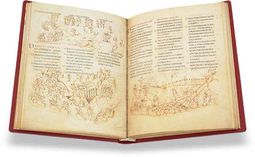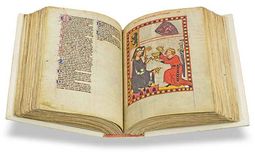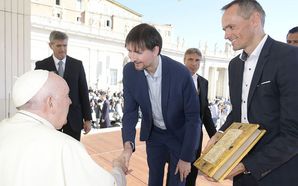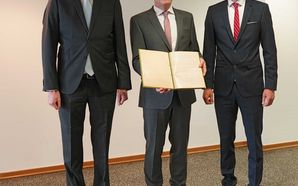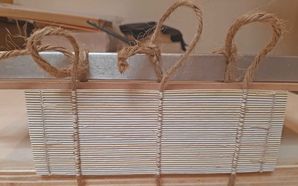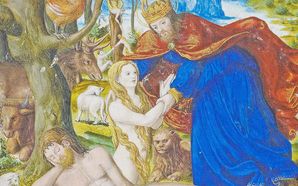Ziereis Facsimiles at Utrecht University: Lecture at the Center for Medieval Studies

On November 30, 2023, we were invited to the Centre for Medieval Studies at Utrecht University (Netherlands) to give an expert lecture on facsimiles in science and teaching. Facsimiles serve as important working and research material for medievalists, linguists, historians, art historians, theologians and many others in practically all universities around the world, as the invaluable and often fragile original documentsare usually not accessible even to these privileged groups of people. Dr. Bart Jaski, head of the manuscript department and curator, has invited lecturers from the university and staff from the university library to learn more about the possible uses and the production of facsimiles in our one-hour lecture.

The Best Possible Alternative to the Original: Facsimiles in Science and Teaching

Facsimiles are always used where access to the original or its use is not possible. Although digital copies of the original manuscripts or prints are increasingly available, this type of reproduction cannot answer all the scientific questions. Academic teaching also relies inevitably on the use of facsimiles. In addition, there are presentations and exhibitions where the original can either not be shown at all or only for a short time. In these cases too, facsimiles are often used to give visitors the best possible impression of the original and at the same time protect it. In the case that originals are lost or stolen, facsimiles are actually the last chance to at least preserve the aura of the precious book treasures. By highlighting these diverse areas of application in our lecture, the audience became acutely aware of why an extremely high level of effort in terms of material, precision, time and expertise is not only desirable but essential for a facsimile.
Thank you again for giving your lecture yesterday, it generated an enthusiastic response among those attending!
Begleitend zum Vortrag: Große Ausstellung im Kartenraum der Bibliothek

On the occasion of our lecture, which met with lively interest, Dr. Jaski prepared an exhibition of facsimiles from the Utrecht University Library in the large Map Room. Here we presented a facsimile of the Codex Manesse, which has now been added to the University Library's inventory. This opportunity led to interesting discussions in which we were not only able to answer detailed questions, but also gain an even deeper insight into the practical handling of facsimiles at the Utrecht University.
Utrecht: A Modern Research Center with a Long Tradition

Utrecht was an important intellectual and cultural center in Western Europe from the 12th to the 16th century. It is therefore hardly surprising that the city is home to the fourth oldest university in the Netherlands: on March 26, 1636, the former Illustrious School was officially granted the status of a university. The "new" institution then incorporated the rich holdings of the municipal library, which derived in particular from the cultural heritage of the numerous medieval convent and church schools.

Today, the university library has an enormous collection of almost 5 million books and periodicals, among which the special collections are particularly noteworthy. These include the Collection of Early Prints and the impressive Collection of Maps and Atlases as well as the Medieval Manuscript Collection, which comprises around 750 volumes. These precious documents form an essential foundation and inspiration for interdisciplinary research and teaching at the internationally networked Utrecht Centre for Medieval Studies (UCMS), where medieval cultures and their echoes are studied by medievalists from a wide range of disciplines, such as linguistics and literature, history and art history, as well as musicology.
From the Treasury of the Utrecht University Library
The Utrecht Psalter is undoubtedly the most famous and most important manuscript in the Utrecht Manuscript Collection. Created between 820 and 840 in a Benedictine abbey near Reims, this Carolingian masterpiece is considered the earliest surviving copy of an illustrated Psalter in Western book history and is now a UNESCO World Heritage. The 150 psalms are accompanied by impressive, narrative pen and ink drawings of unique aesthetics and dynamism, which have repeatedly been compared to drawings by Da Vinci, Rembrandt and Van Gogh. The captivating figures are not only extremely expressive, but are also depicted with incredible sensitivity and, with their innovative liveliness, gave European art an impetus that will have a long-lasting effect, making the Utrecht Psalterone of the most influential works in art history.


